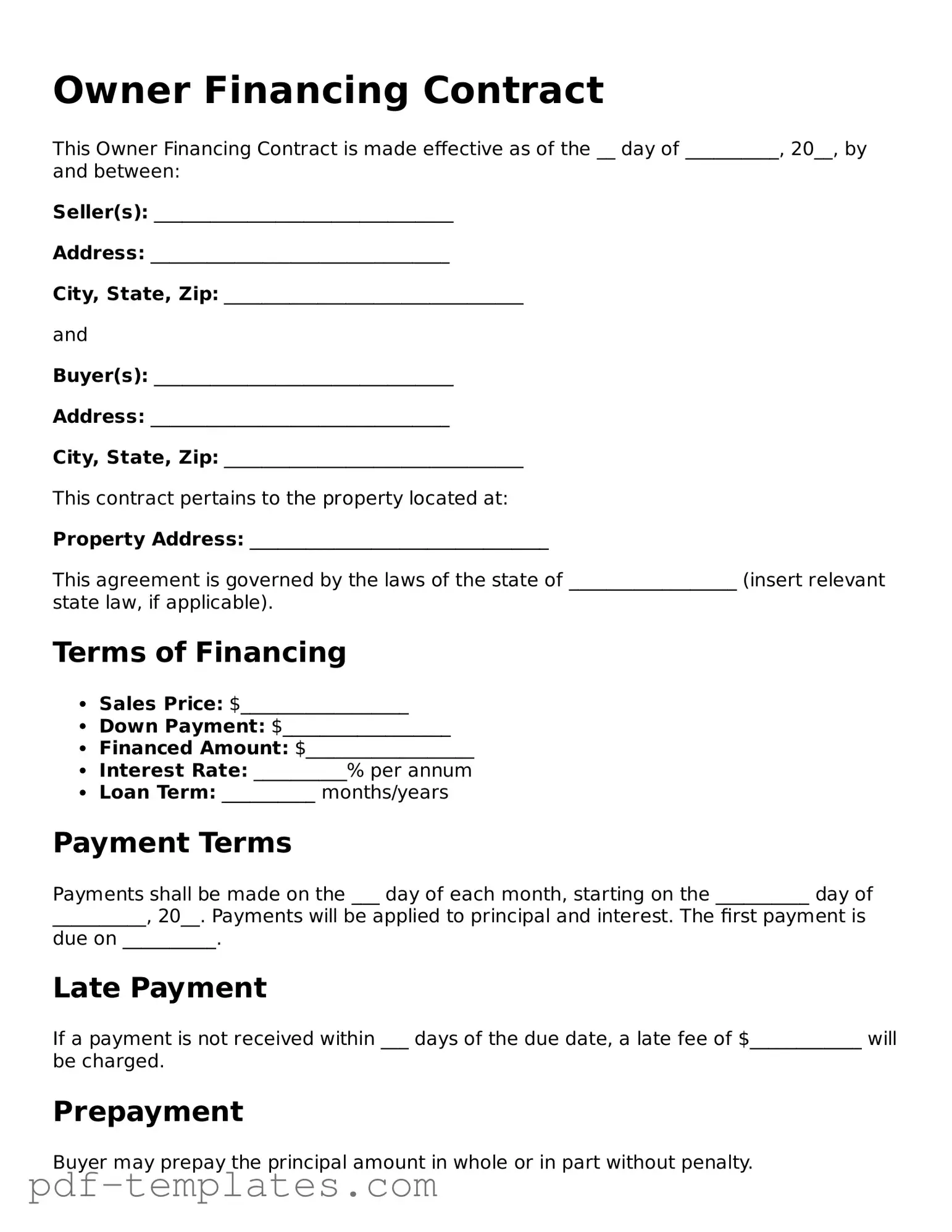The Owner Financing Contract is similar to a Lease Purchase Agreement. In a Lease Purchase Agreement, a tenant has the option to buy the property after a specified lease period. Like owner financing, this arrangement allows the buyer to live in the home while working towards ownership. The key difference lies in the fact that a Lease Purchase Agreement typically includes a rental component, whereas owner financing directly involves the seller providing financing to the buyer without the need for a traditional mortgage.
Another document that shares similarities with the Owner Financing Contract is the Land Contract, also known as a Contract for Deed. In this arrangement, the seller retains the title to the property while the buyer makes payments over time. Once the full payment is made, the title transfers to the buyer. This method is similar to owner financing in that it allows buyers to purchase a home without a bank loan, but it often involves more specific terms regarding property maintenance and payment schedules.
The Promissory Note is another document closely related to the Owner Financing Contract. A Promissory Note is a written promise to pay a specific amount of money at a designated time. In owner financing, this note outlines the buyer's commitment to repay the seller for the loan amount. While the Owner Financing Contract details the terms of the sale, the Promissory Note serves as a formal acknowledgment of the debt, reinforcing the buyer’s obligation to make payments.
Similar to the Owner Financing Contract is the Mortgage Agreement, which is used in traditional financing. A Mortgage Agreement secures a loan with the property itself as collateral. While both documents involve a buyer obtaining financing, the Owner Financing Contract eliminates the need for a bank or financial institution, allowing for a more direct relationship between the buyer and seller.
The Installment Sale Agreement is yet another document that shares characteristics with the Owner Financing Contract. This agreement allows a buyer to pay for a property in installments over time, similar to owner financing. However, an Installment Sale Agreement usually requires the buyer to make a down payment upfront, which may not always be the case in owner financing arrangements.
When engaging in real estate transactions, understanding the various agreements available is crucial, and the Texas Real Estate Purchase Agreement form is no exception. This legal document helps clarify the terms of sale, ensuring all parties are aligned on their responsibilities. For detailed guidelines on filling this out, you can visit https://pdftemplates.info/texas-real-estate-purchase-agreement-form/, which serves as a valuable resource throughout the purchasing process.
The Seller Financing Addendum is also relevant. This document is often added to a standard purchase agreement when the seller agrees to finance the buyer’s purchase. It outlines the terms of the financing, including interest rates and payment schedules. Like the Owner Financing Contract, it provides an alternative to traditional mortgage financing, making homeownership more accessible for buyers who may not qualify for conventional loans.
Another related document is the Option to Purchase Agreement. This agreement gives a tenant the right to purchase a property within a specified timeframe, usually at a predetermined price. While this document does not directly provide financing, it often accompanies owner financing arrangements, allowing the buyer to secure the right to buy while negotiating financing terms with the seller.
Lastly, the Real Estate Purchase Agreement shares similarities with the Owner Financing Contract. This document outlines the terms of a real estate transaction, including price, contingencies, and closing dates. In cases of owner financing, the Purchase Agreement can incorporate financing terms, ensuring both parties understand their obligations. While the Purchase Agreement can be used with traditional financing, it is also adaptable for owner financing situations.
